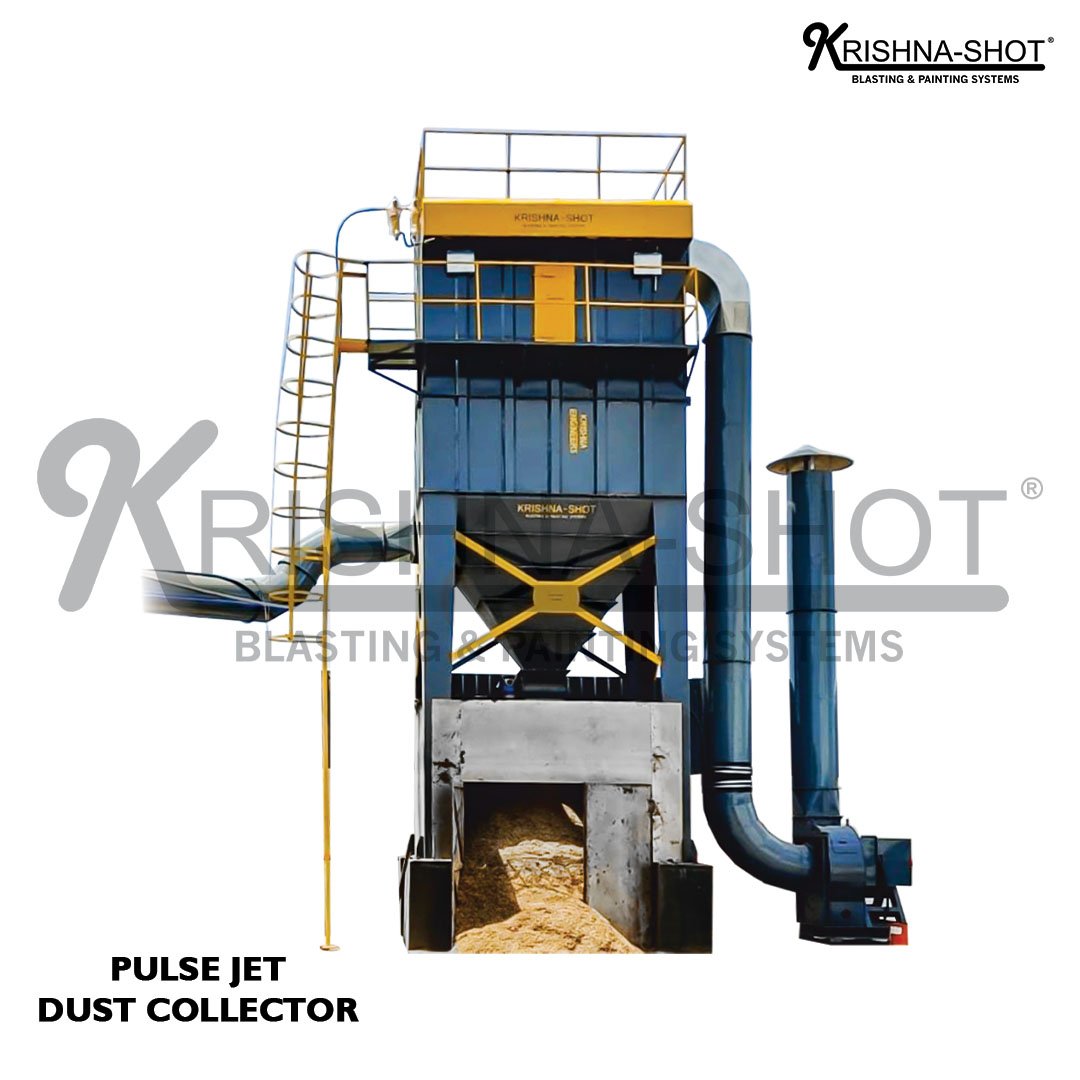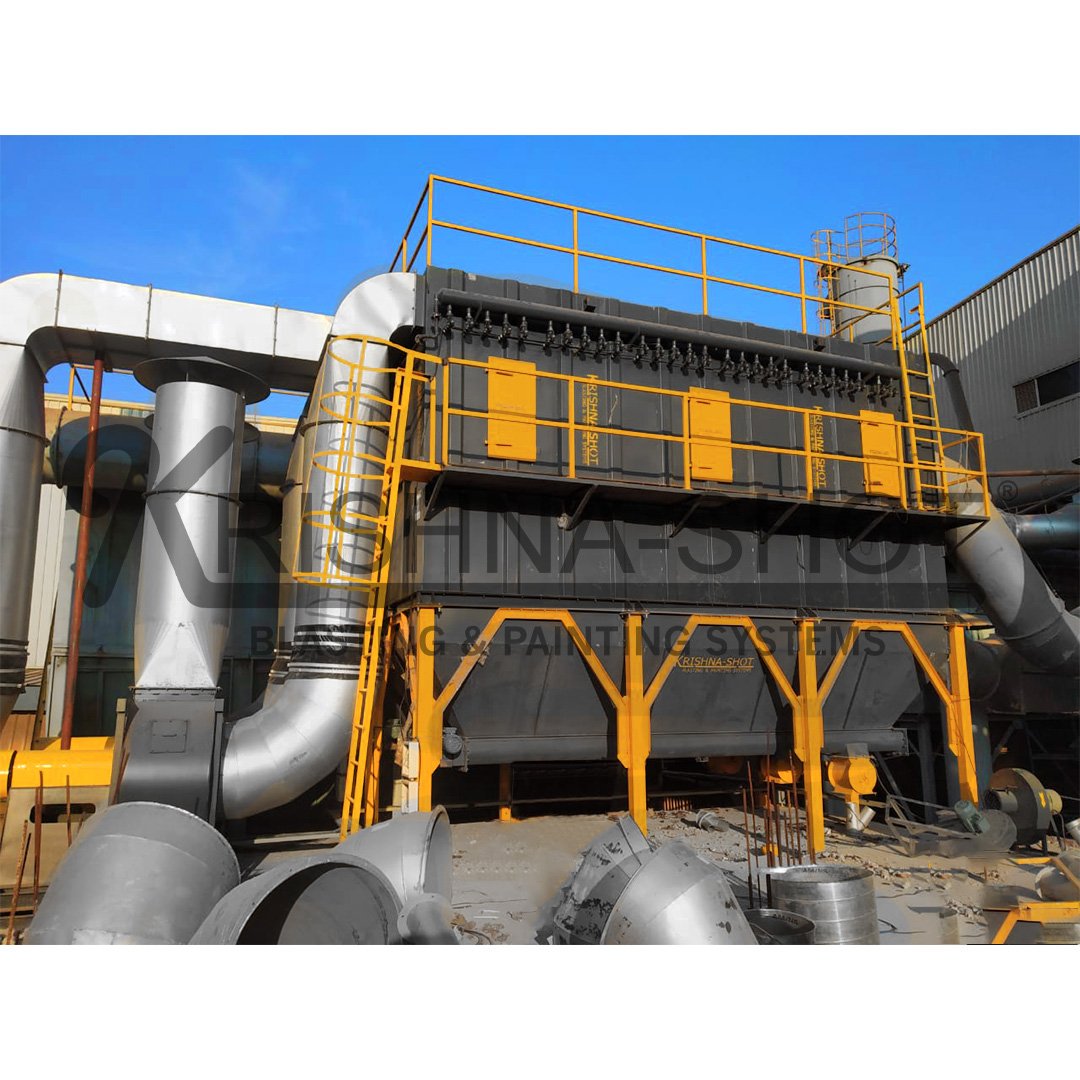Cyclone dust collector
Manufacturer & Supplier Details
- Brand Name: KRISHNA-SHOT®
- Company Name: Krishna Shot Blasting India Pvt. Ltd.
- Experience: 20+ Years in Surface Finishing Solutions
- Verification: Trustseal Verified (Leading Manufacturer & Supplier)
- Delivery Time: Typically 30 Days
- Address: Plot No. 30, Sarita Vihar Nagar, Near Tanawada, Main Salawas Rd, Jodhpur, Rajasthan 342005
- Specialization: Shot Blasting Machines, Blast Rooms, and Paint Booth Systems
- Customer Support: Dedicated after-sales service and technical support
- Certifications: ISO-certified products
Description
Cyclone Dust Collector: Efficient Pre-Separator for Industrial Dust Management
Cyclone Dust Collector is an essential industrial tool designed for separating and collecting dust, particulates, and debris from an airstream before it reaches the primary filtration system. Known for its simplicity, durability, and efficiency, cyclone dust collectors are widely used in industries such as woodworking, metalworking, agriculture, cement production, and more.
What is a Cyclone Dust Collector?
A Cyclone Dust Collector uses centrifugal force to separate dust and debris from the airflow. The device is shaped like a cone, with air entering tangentially at the top and spinning in a downward spiral along the inner walls of the cyclone chamber. Dust particles are thrown outward by the centrifugal force, separating from the air stream, and are collected in a hopper at the bottom. Cleaned air is then expelled through the top outlet.
This pre-separation mechanism reduces the load on the primary filtration system, extending its lifespan and improving efficiency.
Key Features of a Cyclone Dust Collector
- High Separation Efficiency
- Effectively separates large dust particles and debris from the airflow, making it ideal for handling coarse and heavy dust loads.
- Durable Construction
- Built with robust materials like steel, stainless steel, or heavy-duty composites to withstand harsh industrial environments.
- Low Maintenance
- With no moving parts inside the cyclone chamber, maintenance is minimal compared to other dust collection systems.
- Compact Design
- Available in various sizes and configurations to fit into small or large industrial setups.
- Scalability
- Can be used as a standalone pre-separator or integrated with multi-stage dust collection systems.
How Does a Cyclone Dust Collector Work?
The operation of a cyclone dust collector can be summarized in the following steps:
- Air Intake
- Dust-laden air enters the cyclone tangentially at high speed, creating a swirling motion inside the chamber.
- Centrifugal Separation
- As the air spirals downward, heavier dust particles are flung outward due to centrifugal force and collect along the walls of the cyclone.
- Dust Collection
- The separated dust falls into a hopper or collection bin at the bottom of the cyclone.
- Clean Air Outlet
- The lighter, cleaned air rises through the center of the cyclone and exits through the top outlet.
Benefits of Cyclone Dust Collectors
- Enhanced Filtration Efficiency
- Removes up to 99% of coarse and heavy particles, reducing the load on secondary filters or baghouses.
- Extended Filter Life
- Pre-separation reduces wear and tear on fine filters, lowering maintenance costs and downtime.
- Improved Air Quality
- Ensures cleaner air by capturing larger particulates before they reach the primary filtration system.
- Energy Efficiency
- Operates without the need for additional fans or motors, relying on airflow dynamics for separation.
- Versatile Applications
- Suitable for a wide range of materials, including wood chips, metal shavings, cement dust, and grain particulates.
- Cost-Effective
- Offers an economical solution for handling heavy dust loads, reducing the need for frequent filter replacements.
Applications of Cyclone Dust Collectors
- Woodworking
- Collects sawdust, wood chips, and shavings generated by cutting, sanding, and routing processes.
- Metalworking
- Captures metal debris and particles from grinding, welding, and cutting operations.
- Agriculture
- Separates grain dust and husks during processing and storage operations.
- Cement and Mining
- Handles coarse dust and particulates from crushing, grinding, and transportation processes.
- Food Processing
- Removes flour, sugar, and other food-grade particulates to maintain hygiene and safety standards.
- Power Plants
- Controls ash and other particulate emissions from coal-fired and biomass power plants.
How to Choose the Right Cyclone Dust Collector
- Airflow Requirements
- Determine the volume of air (measured in cubic feet per minute, CFM) that needs to be processed based on your facility’s operations.
- Particle Size and Type
- Identify the size, density, and characteristics of the dust particles to ensure compatibility with the cyclone’s design.
- Construction Material
- Choose a cyclone made of materials that can handle the abrasiveness or corrosiveness of the dust.
- Space Constraints
- Consider the size and layout of your facility to select a cyclone that fits within available space.
- Integration Needs
- Decide whether the cyclone will be used as a standalone unit or integrated with a multi-stage filtration system.
Maintenance Tips for Cyclone Dust Collectors
- Inspect Seals
- Ensure all gaskets and seals are intact to prevent air leakage.
- Empty the Hopper
- Regularly empty the dust collection bin to avoid overloading and clogging.
- Check for Wear
- Inspect the inner surfaces of the cyclone for signs of wear or abrasion, especially in high-dust environments.
- Monitor Airflow
- Keep an eye on airflow performance to detect any blockages or inefficiencies.
- Clean Inlet and Outlet
- Periodically clean the air intake and outlet to maintain optimal airflow.
Advantages Over Other Dust Collectors
- No Moving Parts
- Unlike other systems, cyclone dust collectors do not rely on mechanical parts, reducing maintenance requirements.
- Handles High Dust Loads
- Capable of processing large volumes of coarse and heavy dust effectively.
- Standalone or Supplementary
- Can be used alone for coarse filtration or as a pre-filter for advanced dust collection systems.
Shot Blasting Machine Point of View
The Cyclone Dust Collector is a cost-effective, durable, and efficient solution for managing industrial dust and debris. Its ability to handle large dust loads while reducing the strain on secondary filters makes it an invaluable tool across various industries. By selecting the right cyclone system and maintaining it properly, businesses can improve air quality, enhance equipment longevity, and achieve compliance with environmental standards.













